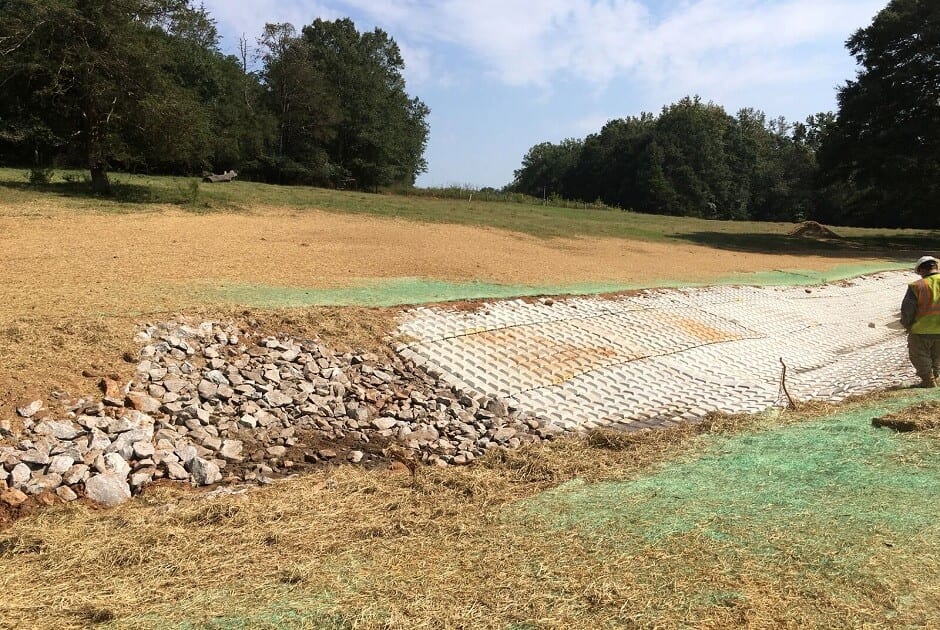When digging a new pipeline, one of the biggest struggles for companies seems to be preventing pipeline erosion. Pipeline erosion is a problem that can become painstakingly difficult to overcome, forcing companies to drain their resources in search of finding a solution. One of the answers to help to prevent pipeline erosion is the use of sediment basins and flexible down drains.
What Is A Flexible Down Drain?
A flexible down drain is a type of heavy duty fabric or material that companies use to control runoff. They are particularly useful when dealing with steep slopes or rapid changes in elevation. By utilizing flexible down drains, companies can ease or guide the water down the slope without the risk of the slope eroding.
These devices are typically temporary and are most beneficial during initial pipe construction. Digging the trench and constructing the pipe are examples where there is a significantly higher risk of concentrated runoff that could result in excessive erosion.
Flexible down drains are useful tools because they do not require a formal or complicated design. Instead, companies can use them in areas where the soil is undisturbed or where it is well-compacted. However, companies should study the land beforehand so that they have an idea of how much runoff to expect.
Companies will want to construct the down drain that it is large enough to convey the maximum runoff expected during the drain’s lifetime. Too often companies have the right idea in constructing a down drain but do not build it big enough to handle the amount of runoff that area will receive. Proper preparation and research help to combat this challenge.
When constructing the down drain, companies will want to create a large entrance and compact the soil around this area. The entrance should slope toward the pipe at a rate of at least half an inch per foot. Companies should consider using metal “T” pins as anchors in areas where the ground is exceptionally soft. This will help to prevent the drain from moving.
What Are Sediment Basins?
Sediment basins are areas designed to receive the runoff from flexible down drains. They typically exist as temporary ponds at a construction site, diverting water away from the job site.
Companies typically design sediment basins so that the captured runoff is released slowly. This can be done through evaporation or the use of pumps. Companies should install at least one sediment basin for every two acres of the job site, although they may need to create more sediment basins if the area in which they are digging is particularly prone to runoff.


